Vera Hofer
Functional Anomaly Detection: a Benchmark Study
Jan 13, 2022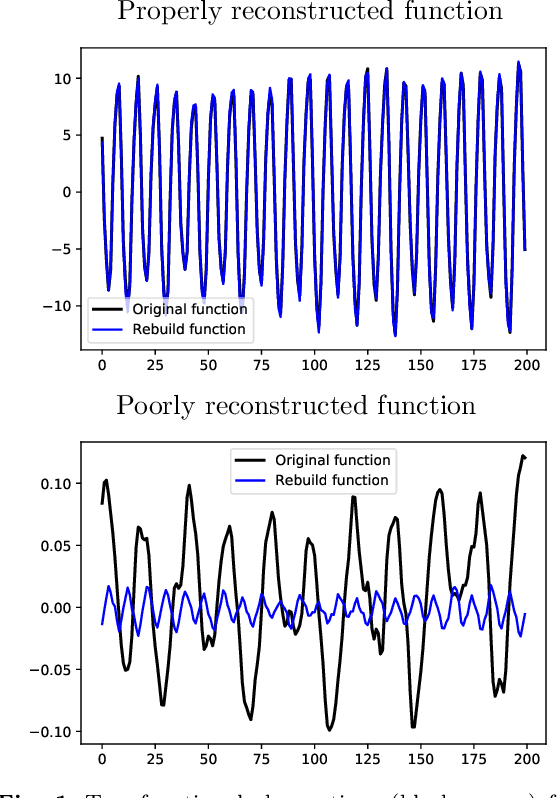
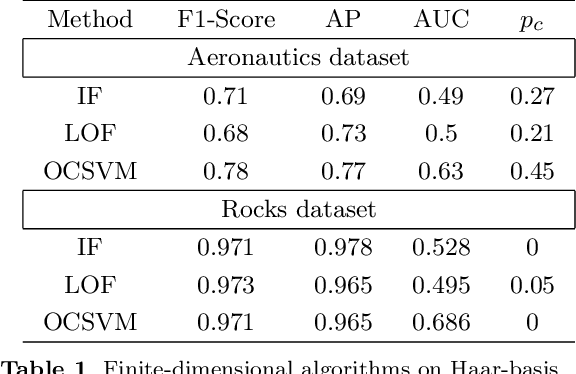
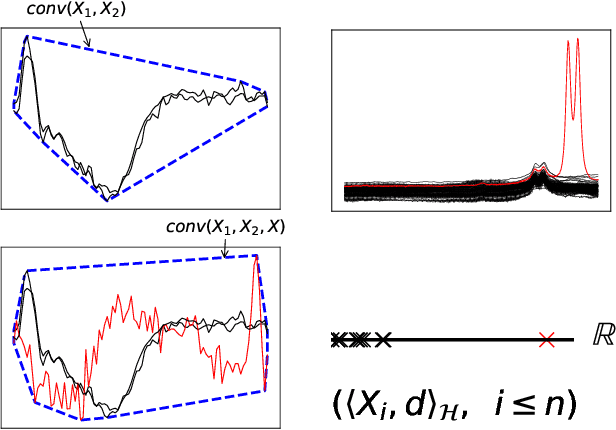
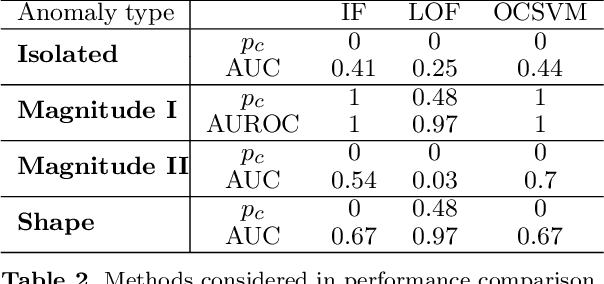
Abstract:The increasing automation in many areas of the Industry expressly demands to design efficient machine-learning solutions for the detection of abnormal events. With the ubiquitous deployment of sensors monitoring nearly continuously the health of complex infrastructures, anomaly detection can now rely on measurements sampled at a very high frequency, providing a very rich representation of the phenomenon under surveillance. In order to exploit fully the information thus collected, the observations cannot be treated as multivariate data anymore and a functional analysis approach is required. It is the purpose of this paper to investigate the performance of recent techniques for anomaly detection in the functional setup on real datasets. After an overview of the state-of-the-art and a visual-descriptive study, a variety of anomaly detection methods are compared. While taxonomies of abnormalities (e.g. shape, location) in the functional setup are documented in the literature, assigning a specific type to the identified anomalies appears to be a challenging task. Thus, strengths and weaknesses of the existing approaches are benchmarked in view of these highlighted types in a simulation study. Anomaly detection methods are next evaluated on two datasets, related to the monitoring of helicopters in flight and to the spectrometry of construction materials namely. The benchmark analysis is concluded by recommendation guidance for practitioners.
Temporal Density Extrapolation using a Dynamic Basis Approach
Jun 03, 2019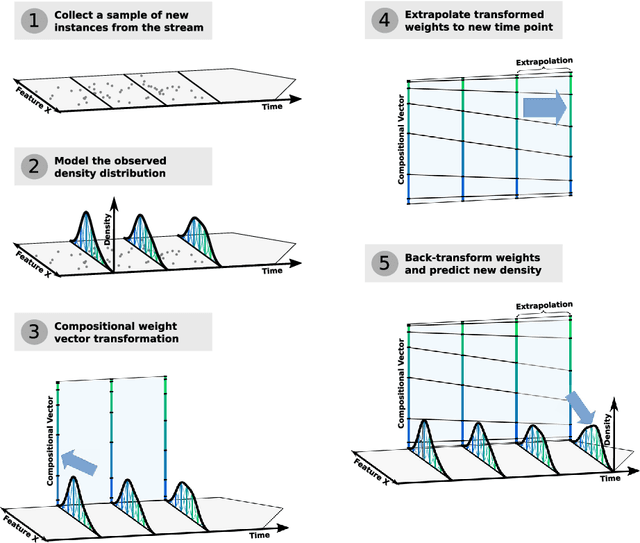

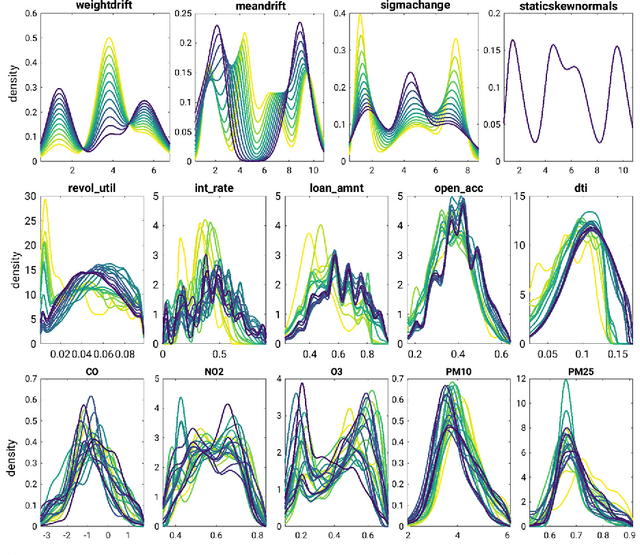
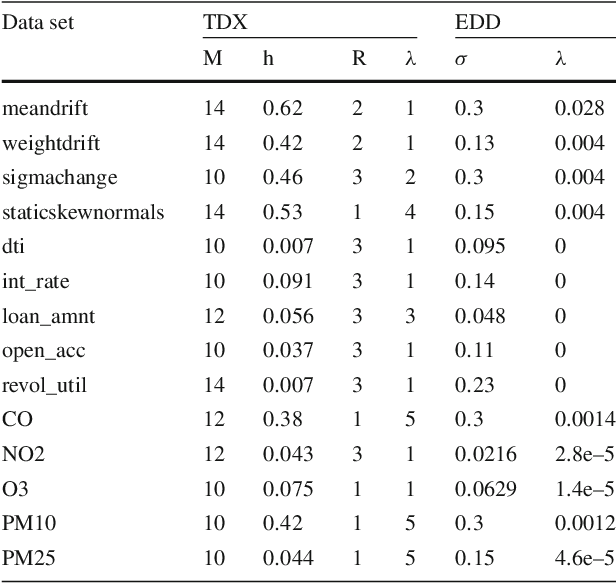
Abstract:Density estimation is a versatile technique underlying many data mining tasks and techniques,ranging from exploration and presentation of static data, to probabilistic classification, or identifying changes or irregularities in streaming data. With the pervasiveness of embedded systems and digitisation, this latter type of streaming and evolving data becomes more important. Nevertheless, research in density estimation has so far focused on stationary data, leaving the task of of extrapolating and predicting density at time points outside a training window an open problem. For this task, Temporal Density Extrapolation (TDX) is proposed. This novel method models and predicts gradual monotonous changes in a distribution. It is based on the expansion of basis functions, whose weights are modelled as functions of compositional data over time by using an isometric log-ratio transformation. Extrapolated density estimates are then obtained by extrapolating the weights to the requested time point, and querying the density from the basis functions with back-transformed weights. Our approach aims for broad applicability by neither being restricted to a specific parametric distribution, nor relying on cluster structure in the data.It requires only two additional extrapolation-specific parameters, for which reasonable defaults exist. Experimental evaluation on various data streams, synthetic as well as from the real-world domains of credit scoring and environmental health, shows that the model manages to capture monotonous drift patterns accurately and better than existing methods. Thereby, it requires not more than 1.5-times the run time of a corresponding static density estimation approach.
* Accepted for publication in Data Mining and Knowledge Discovery, Special issue of the ECML/PKDD 2019 Journal Track, Springer, 2019
 Add to Chrome
Add to Chrome Add to Firefox
Add to Firefox Add to Edge
Add to Edge